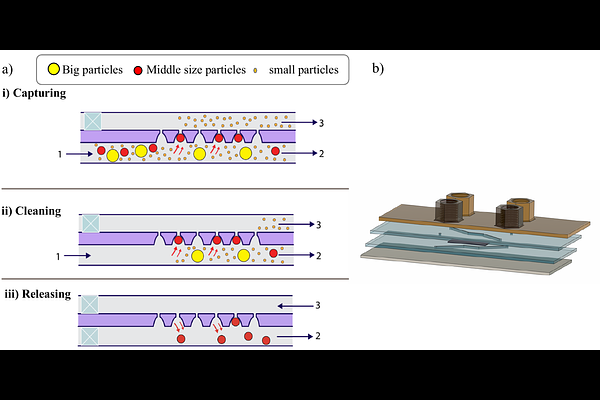Development of a PEGylated Parylene Nanopocket Membrane for the Capture and Release of Lipid Vesicles

Development of a PEGylated Parylene Nanopocket Membrane for the Capture and Release of Lipid Vesicles
Alsudais, M.; Petersen, K.; Hosseinifakhr, A.; Frasch, L.; Gholizadeh, S.; Dehghani, M.; Gaborski, T. R.
AbstractMembranes are commonly used for the separation and purification of a variety of biological species. In this study, we developed a nanopocket membrane that can capture nanoparticles and extracellular vesicles in tangential flow filtration by pulling the species of interest into a nanopocket, while tangential flow washes away particles too large to be captured. We developed the pores using a four-step lithography process. By optimizing photolithography parameters, particularly exposure dose, we achieved well-defined pore shapes with the desired wall tilt, forming nanopocket geometries. We validated membrane performance using bead mixtures of varying diameters (50 nm - 10 microns), demonstrating its ability to pass small particles, capture mid-sized particles, and exclude larger ones. Surface modification with poly(l-lysine)- grafted poly(ethylene glycol) enhanced this performance by reducing pore size and improving particle release. Additionally, we demonstrated selective capture and release of liposomes as well as EVs in the presence of fluorescently labeled BSA (f-BSA) protein. During this process, EVs were retained and later released, while f-BSA passed through, confirming selective capture and reduced protein contamination. These PEGylated nanopocket membranes constitute a low- pressure platform for gentle, size-selective isolation of nanoscale bioparticles, laying the groundwork for improved extracellular-vesicle analytics and point-of-care diagnostic applications.